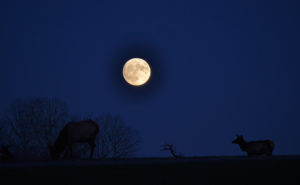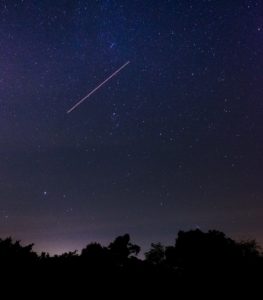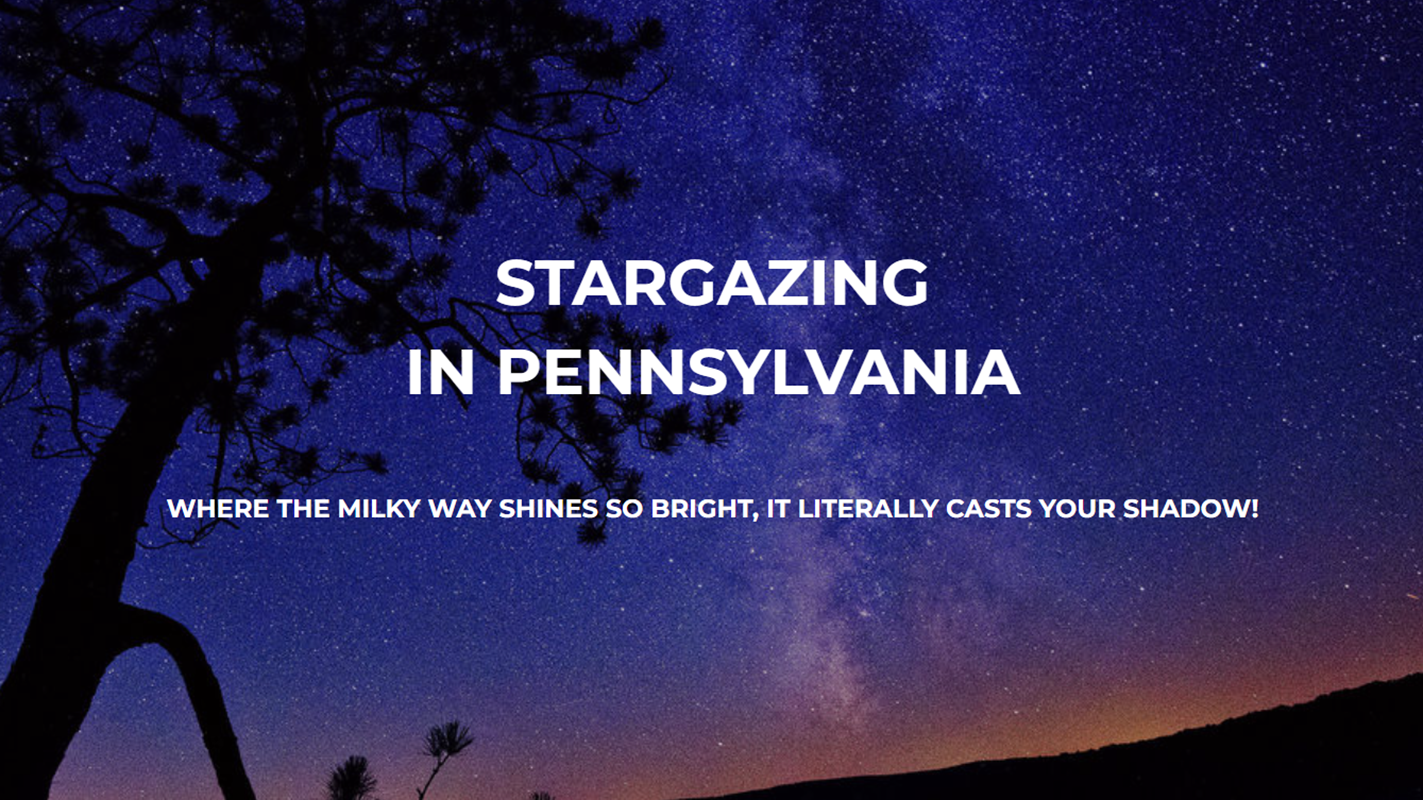Eyes on the Sky: Astrological Events You Won’t Want to Miss Along Route 6 in 2022
Famous physicist Stephen Hawking once said, “Look up at the stars and not down at your feet. Try to make sense of what you see, and wonder about what makes the universe exist.”
Or, if you have young kids in the house who watch the movie Shrek on repeat mode all day, you may connect with what Shrek tells Donkey as they’re looking up at the night sky: “The stars don’t tell the future. They tell stories.”
Indeed, the stars are for everyone, and the night sky is the amphitheater in which they exist. And it’s no secret that all along the PA Route 6 corridor, we love stars! In fact, in 2000 the DCNR declared Cherry Springs State Park in Potter County its first Dark Sky Park. The park’s astronomy field offers an unobstructed 360-degree view of the night sky, and stargazers and astronomers from all around the country come here to image stars and constellations.
Cherry Springs State Park hosts two major star parties every year, but is also open year-round to visitors who just want to observe the night sky. A telescope and cup of coffee may add to the experience, but all you really need to enjoy this spectacle is a cloudless sky. So whether you’re at Cherry Springs or lounging in your own backyard, pull up your favorite chair, turn off the lights, and lift your eyes skyward to view these celestial wonders astronomers say will occur in 2022.
April 21-22
April is Global Astronomy Month, so it’s only fitting that the first meteor shower to peak in over three months is occurring now. The Lyrid meteor shower is expected to produce around 15 shooting stars per hour.
May 4
On the heels of the Lyrids will be the eta Aquarids less than two weeks later. This meteor shower is expected to offer 20-40 meteors per hour on the night of May 4th into May 5th.
May 15-16
Cloudless skies permitting, on the night of May 15 into May 16, the entire contiguous United States will witness the moon turning red! That night, the moon will pass through Earth’s shadow, creating a total lunar eclipse.
The last total lunar eclipse occurred in May 2021 but was only visible on the West Coast. In November 2021, we witnessed a partial lunar eclipse when 97% of the moon fell dark, just 3% short of a total eclipse. So clear your schedule for the night of May 15 and go outside and look up!
June 14
The first of 2022’s three supermoons will appear on June 14th. A supermoon occurs when the full moon is at the point in its orbit when it is closest to Earth, so the moon will appear slightly larger and brighter than normal.
Although the term “supermoon” was coined in 1979 by astrologer Richard Nolle, the word didn’t infiltrate mainstream conversation until November 2016. At that time, the moon full moon fell within just a few hours of an unusually close perigee (the point in its orbit closest to Earth) that made it appear approximately 14% larger and 30% brighter than when the full moon falls near apogee (the point in its orbit that is farthest from Earth).
If you miss the June 14th supermoon, you’ll have two other opportunities in 2022 to view one, July 13th and August 12th.

(Photo: The supermoon of November 2016.)
June 24
Ever hear the saying “when the stars align…”? Typically, this phrase is used to describe what might happen when an unexpected or nearly impossible event takes place. Well, if you’ve been waiting for that magic moment when the stars line up, June 24th just might be your night! That’s when Mercury, Venus, Mars, Jupiter, and Saturn will all be bright enough to see with the naked eye, and they will align in order just before sunrise across the Eastern sky. The crescent moon will also be present, located between Venus and Mars.
Mercury will be near the horizon in the pre-dawn sky, and then arcing and in line will be Venus, the moon, Mars, Jupiter, and then Saturn. You’ll be able to draw a “nearly-straight” line that passes through all of them in the sky.
In truth, the moon and planets won’t be lined up perfectly at all in the solar system. That’s just how they’ll look from our perspective here on Earth.
August 12-13
The Perseid meteor shower is one of the most popular meteor showers to peak on a summer night, producing 50-100 shooting stars per hour. Unfortunately, this year’s event will be subdued thanks to the third and final supermoon of 2022. Some of the more fantastic meteors may still be visible, but the supermoon will command most of the attention.

(Photo: 2022 promises several meteor showers you won’t want to miss!)
November 11-12
In a normal year, the Northern Taurids doesn’t usually make the list of significant meteor showers, but 2022 may be different. Typically, the Northern Taurids produce only around five shooting stars per hour. But every seven years, those shooting stars seem to produce extra bright fireballs that can last several seconds. For what it lacks in quantity, it certainly makes up for with quality!
The last “fireball” years were 2008 and 2015. Hopefully the trend continues and we get to view this spectacle again in 2022.
December 8
In astronomy, opposition is when something is opposite of the sun from the perspective of the Earth. This December, Mars will be the planet in opposition, visible all night long, and will shine brighter than most other stars in the sky. Look closely and you’ll also see why it’s called the “Red Planet,” as it will have a slightly reddish hue to it compared to other stars. Mars gets its nickname from the abundance of iron oxide (aka rust) in its soil and rocks.
Mars opposition only occurs once every 26 months, with the next occurrence expected to happen January 15, 2025. During opposition, Mars is actually the closest it will be to Earth, which presents NASA with a great opportunity for launching missions to the Red Planet.
December 13
The final meteor shower of the year is also one of the most anticipated, set to take place the night of December 13th. The Gemini meteor shower typically produces over 100 shooting stars per hour. Last year’s bright moon reduced those rates to approximately 30-40 shooting stars per hour, and it threatens to do the same in 2022. Therefore, the best time to view the event will be before the moon rises between 10 p.m. and 11 p.m.

